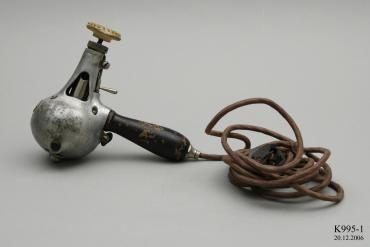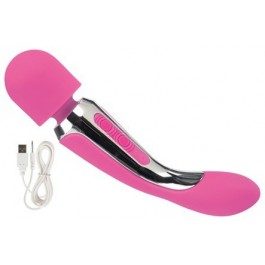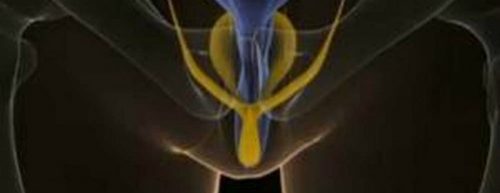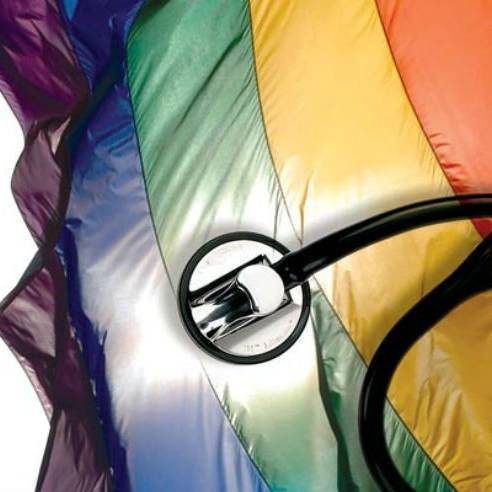If you ask most people to describe the clitoris they’ll likely tell you it’s a pea sized nub at the top end of the labia minora.
In reality, that pea-sized nub (the clitoral glans) is only the tip of the iceberg—a fact that wasn’t widely understood until 2009 when clitoral reconstruction surgeons Dr Odile Buisson and Dr Pierre Foldès produced and published the first complete 3-D sonograph of the stimulated clitoris.
The clitoris is the only organ in the human body which has the sole purpose of providing pleasure. It is not needed for reproduction. It doesn’t assist in the removal of waste products from the body. The only thing it does is provide women with sexual pleasure.
So, needless to say, despite a couple of hundred thousand years of human existence,science didn’t bother to put much effort into understanding it until very recently.
We didn’t even know how big it was until the late 1990s when urologist Helen O’Connell of the Royal Melbourne Hospital began to study the microscopic nerve supply to the clitoris using MRI. Dr O’Connell was developing an operation to treat incontinence in women and she knew that when surgeons were removing cancerous prostates in men they took great care to ensure their sexual function was preserved, by avoiding certain nerves and blood vessels. Doing the same for women undergoing pelvic surgery, she discovered, was largely a matter of guesswork because there wasn’t a single text book available that described the nerve or blood supply to the clitoris.So she took the matter into her own hands, dissecting cadavers and mapping the tissue. Comparing her findings to anatomical illustrations in text books, she quickly realised that the existing textbooks were extremely inaccurate. Some didn’t even bother to mention the clitoris at all!Dr O’Connell published her findings in 1998; the first time the medical world had been briefed as to just how big the clitoris really was.
The yellow art is the clitoris and if you measure up all of the clitoral tissue you will find that clitorises range from four to twelve inches in size. The clitoral glans has 8,000 nerve endings (twice as many as the penis) and, like the penis, it swells up when aroused.
Interestingly, the clitoris has been discovered, lost and rediscovered several times throughout human history.
The Ancient Greek, Persian and Arabic anatomists certainly seemed aware of the clitoris, but for the most part they didn’t quite understand what it did. The Ancient Greeks viewed women as lesser or ‘distorted’ men and the influential physician Claudius Galen held that men, the superior sex, had their sex organ on the outside, while women’s inferior sex organ remained hidden on the inside. He didn’t believe that women were capable of enjoying sex.
In 1559, the anatomists Realdo Colombo and Gabriel Falloppio (after whom the Fallopian tubes were named) both claimed to have discovered the clitoris, which they clearly didn’t because it was already known to science. And to women.Throughout the sixteenth and seventeenth centuries, various anatomists described the clitoris, with increasing degrees of accuracy, and in 1662, Dutch physician Reinier De Graafeven described the internal clitoris and noted the clitoris’s importance to women’s enjoyment of sex.
Toward the beginning of the eighteenth century, shining the light of objectivity onto human sexuality became a focus for science. The nature of sex-differentiation began to be widely discussed and sexual behaviour was studied and classified. Men were considered active agents, who expended energy, while women were passive, storing and conserving energy. The ideal woman had little sexual appetite and the clitoris was held responsible for the over-excitement of the nervous system, which led to all sorts of terrible health outcomes for any woman who masturbated or enjoyed sex too much. These outcomes purportedly included epileptic fits, mania, idiocy and death. In Victorian England, gynaecologist Isaac Baker Brown publicly promoted clitoridectomy as a cure for these terrible conditions. He carried out a large number of such surgeries and in 1866 he published a popular book, On the Curability of Certain Forms of Insanity, Epilepsy, Catalepsy, and Hysteria in Females, before eventually falling out of favour with the medical establishment.
At the same time that Baker Brown was ‘curing’ women of masturbation and nymphomania, other gynaecologists were offering their female patients ‘stimulation therapy’ for ‘hysteria’; otherwise known as sexual dissatisfaction. Masturbation couldn’t be encouraged, because it was considered terribly bad for a woman’s health, but physicians could massage a woman’s clitoris until she achieved ‘paroxysm’. Paroxysm. Not orgasm. Because orgasms were bad for women, and besides they weren’t capable of having them anyway. So said the superior male intellect of the times.
Physician-assisted paroxysm was, perhaps unsurprisingly, incredibly popular with Victorian women, and it caused the poor physicians terrible hand-strain. So physicians began to experiment with mechanical gadgets. These included water-driven gadgets and steam driven dildos (and yes those were as messy and dangerous as they sound). Late in the nineteenth century, the first electrical appliances began to appear and in 1880, ten years before we got the vacuum cleaner, English physician Dr Joseph Mortimer Granville patented the electromechanical vibrator, which he reportedly named ‘The Hammer’.
 It probably looked something like this early vibrator, which looks more like a tradie’s tool than an instrument of sexual pleasure!
It probably looked something like this early vibrator, which looks more like a tradie’s tool than an instrument of sexual pleasure!
Contrast this with an example of its modern equivalent, the Embrace Body Wand by California Exotics, from the Australian adult shop, SexToys247.net.au:
Needless to say, aspiring entrepreneurs quickly saw a market and before too long the physicians were largely out of the paroxysm business, with women able to purchase these ‘personal massage’ devices to use at home.
During the 1920s vibrators began showing up in pornographic film-reviewss, which once again made them socially unacceptable, and they remained unacceptable and hard to find until the 1970s.
It was only in the 1960s and 70s that feminists reclaimed the clitoris as the site of the female orgasm, after decades of mainstream acceptance of Sigmund Freud’s views. According to Freud, clitoral pleasure represented an immature stage of development. Freud believed that when a girl realised  she didn’t have a penis, she stopped clitoral masturbation out of embarrassment at her inferior equipment. A woman achieved sexual maturity, Freud believed, only when she shifted her sexual experiences to her vagina.
she didn’t have a penis, she stopped clitoral masturbation out of embarrassment at her inferior equipment. A woman achieved sexual maturity, Freud believed, only when she shifted her sexual experiences to her vagina.
We now understand that all female orgasms, however they are achieved, are clitoral orgasms.
A woman can achieve orgasm by using fingers, a tongue or a toy like the Embrace Body Wand to stimulate the clitoral glans—the external nub which protrudes from the body. She can also achieve orgasm through stimulation of the internal parts of the clitoris through the walls of the vagina. A great toy for this is the Fantasy Elite Double Delight Strap-on, which enables both the person receiving the pleasure and the person giving the pleasure to receive stimulation.
There is no right way; no superior way; no mature way for a woman to orgasm. If it makes any part of your clit feel good, do it!



